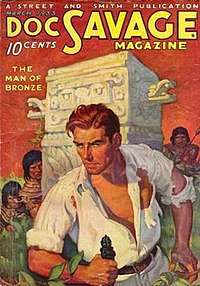Pulp magazines were inexpensive fiction magazines that were published from 1896 through the 1960s. The term "pulp" derives from the cheap wood pulp paper on which the magazines were printed. In contrast, magazines printed on higher-quality paper were called "glossies" or "slicks". The typical pulp magazine had 128 pages; it was 7 inches (18 cm) wide by 10 inches (25 cm) high, and 0.5 inches (1.3 cm) thick, with ragged, untrimmed edges. Pulps were the successors to the penny dreadfuls, dime novels, and short-fiction magazines of the 19th century.
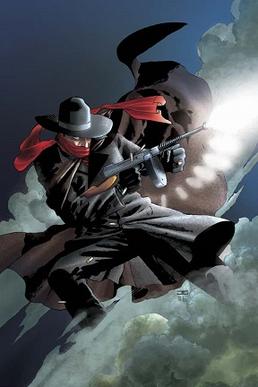
The Shadow is a fictional character created by American magazine publishers Street & Smith and writer Walter B. Gibson. Originally created to be a mysterious radio show narrator, and developed into a distinct literary character in 1931 by Gibson, The Shadow has been adapted into other forms of media, including American comic books, comic strips, serials, video games, and at least five feature films. The radio drama included episodes voiced by Orson Welles.

Lester Dent was an American pulp-fiction writer, best known as the creator and main writer of the series of novels about the scientist and adventurer Doc Savage. The 159 Doc Savage novels that Dent wrote over 16 years were credited to the house name Kenneth Robeson.

The Spider is an American pulp-magazine hero of the 1930s and 1940s. The character was created by publisher Harry Steeger and written by a variety of authors for 118 monthly issues of The Spider from 1933 to 1943. The Spider sold well during the 1930s, and copies are valued by modern pulp magazine collectors. Pulp magazine historian Ed Hulse has stated "Today, hero-pulp fans value The Spider more than any single-character magazine except for The Shadow and Doc Savage."
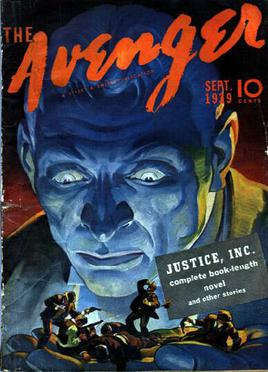
The Avenger is a fictional character whose original adventures appeared between September 1939 and September 1942 in the pulp magazine The Avenger, published by Street & Smith, which ran 24 issues. Five additional short stories were published in Clues Detective magazine (1942–1943), and a sixth novelette in The Shadow magazine in 1943. Decades later, newly written pastiches were commissioned and published by Warner Brothers' Paperback Library from 1973 to 1974.

Nick Carter is a fictional character who began as a dime novel private detective in 1886 and has appeared in a variety of formats over more than a century. The character was first conceived by Ormond G. Smith and created by John R. Coryell. Carter headlined his own magazine for years, and was then part of a long-running series of novels from 1964 to 1990. Films were created based on Carter in France, Czechoslovakia and Hollywood. Nick Carter has also appeared in many comic books and in radio programs.
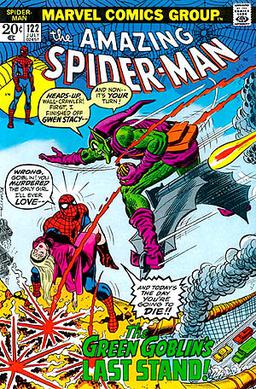
The Bronze Age of Comic Books is an informal name for a period in the history of American superhero comic books, usually said to run from 1970 to 1985. It follows the Silver Age of Comic Books and is followed by the Modern Age of Comic Books.
Mark Ellis is an American novelist/graphic novelist, journalist, and comics creator who under the pen name James Axler has written scores of books for the Outlanders and Deathlands paperback novel series as well as numerous other books under his own name.
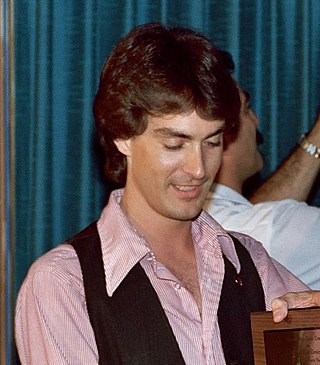
Dave Lee Stevens was an American illustrator and comics artist. He was most famous for creating The Rocketeer comic book and film character, and for his pin-up style "glamour art" illustrations, especially of model Bettie Page. He was the first to win Comic-Con International's Russ Manning Most Promising Newcomer Award in 1982, and received both an Inkpot Award and the Kirby Award for Best Graphic Album in 1986.

The Phantom Detective was the second pulp hero magazine published, after The Shadow. The first issue was released in February 1933, a month before Doc Savage, which was released in March 1933. The title continued to be released until 1953, with a total 170 issues. This is the third highest number of issues for a character pulp, after The Shadow, which had 325 issues, and Doc Savage, which had 181. In western titles, Texas Rangers would have around 212 issues of their main character, known as the Lone Wolf.
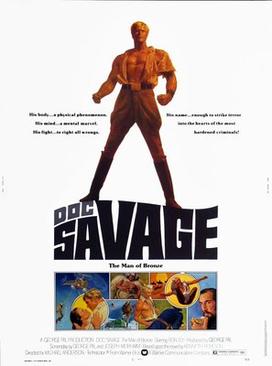
Doc Savage: The Man of Bronze is a 1975 American action film starring Ron Ely as pulp hero Doc Savage. This was the last film completed by pioneering science fiction producer George Pal. It was directed by Michael Anderson, who had previously directed another big-budget adventure film, Around the World in 80 Days, the 1956 Best Picture of the Academy of Motion Picture Arts and Sciences.

William Murray is an American novelist, journalist, short story, and comic book writer. Much of his fiction has been published under pseudonyms. With artist Steve Ditko, he co-created the superhero Squirrel Girl.

Death in Silver is a Doc Savage pulp novel by Lester Dent writing under the house name Kenneth Robeson. It was published in October 1934.

Millennium Publications was an American independent comic book publishing company active in the 1990s.
Bob Larkin is an American comics artist primarily known for his painted covers for Marvel Comics' magazine-format titles Marvel Magazines in the 1970s and early 1980s and for his 32 painted covers on the Bantam Books paperback reissues series of the Doc Savage pulp novels.

Doc Savage was an American pulp magazine that was published from 1933 to 1949 by Street & Smith. It was launched as a follow-up to the success of The Shadow, a magazine Street & Smith had started in 1931, based around a single character. Doc Savage's lead character, Clark Savage, was a scientist and adventurer, rather than purely a detective. Lester Dent was hired to write the lead novels, almost all of which were published under the house name "Kenneth Robeson". A few dozen novels were ghost-written by other writers, hired either by Dent or by Street & Smith. The magazine was successful, but was shut down in 1949 as part of Street & Smith's decision to abandon the pulp magazine field completely.

The Nemesis of Evil is a science fiction novel by American writer Lin Carter, the first in his "Zarkon, Lord of the Unknown" series. It was first published in hardcover by Doubleday in 1975, with a paperback edition following from Popular Library in March 1978. It was reissued by Wildside Press in 1999. An ebook edition was issued by Thunderchild Publishing in August 2017.

The Earth-Shaker is a science fiction novel by American writer Lin Carter, the fourth in his "Zarkon, Lord of the Unknown" series. It was first published in hardcover by Doubleday in July 1982. An ebook edition was issued by Thunderchild Publishing in November 2017.
